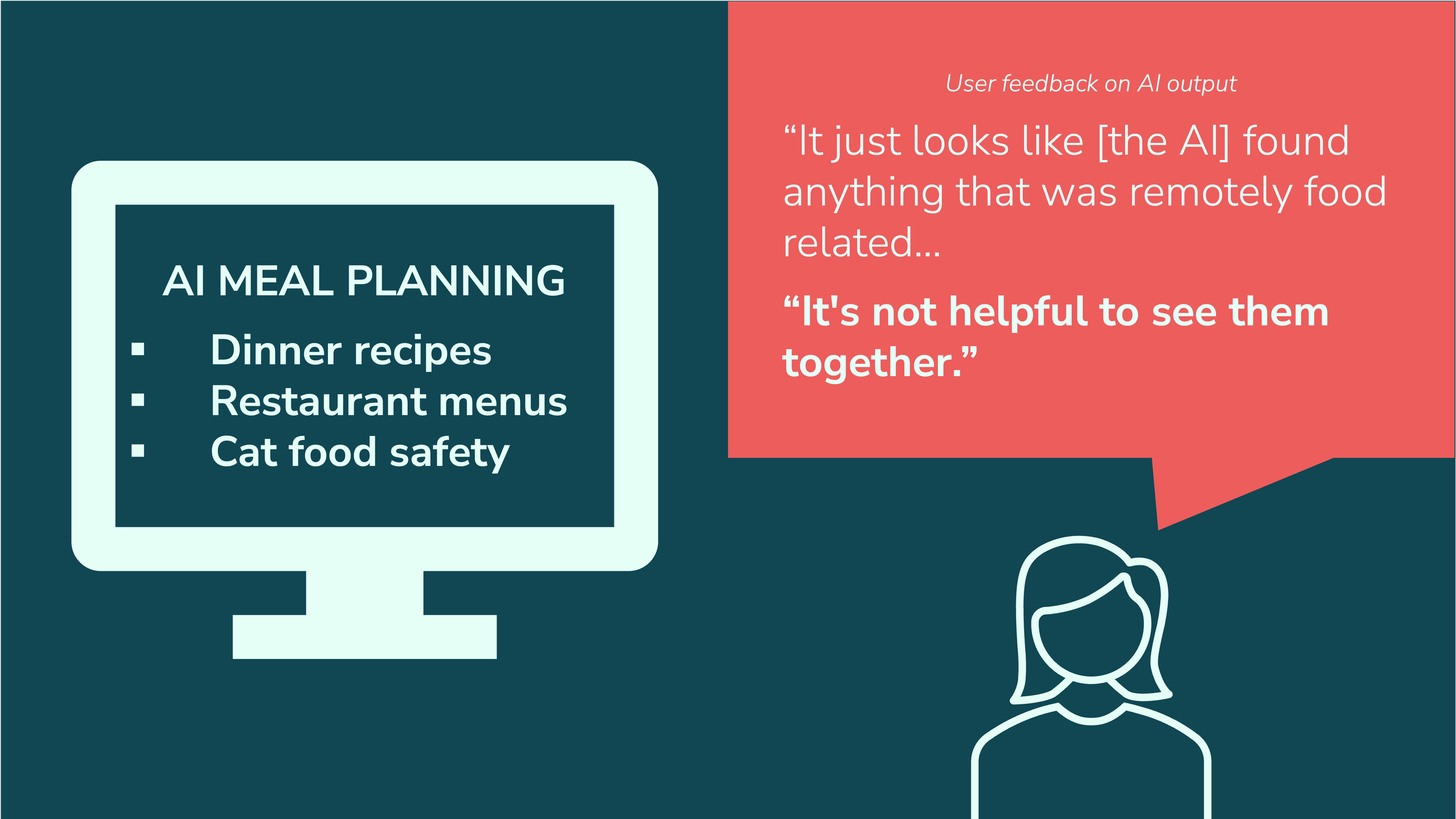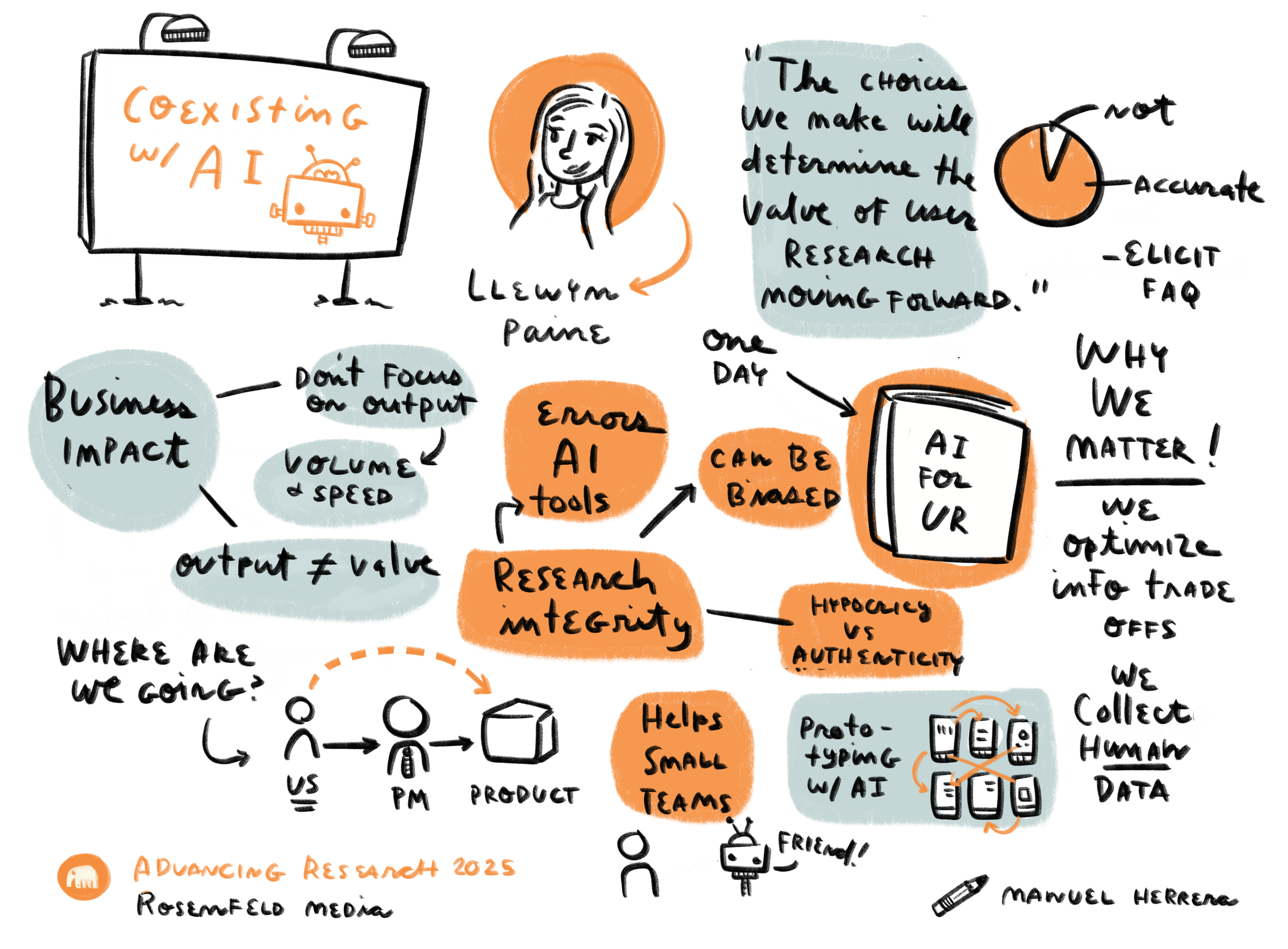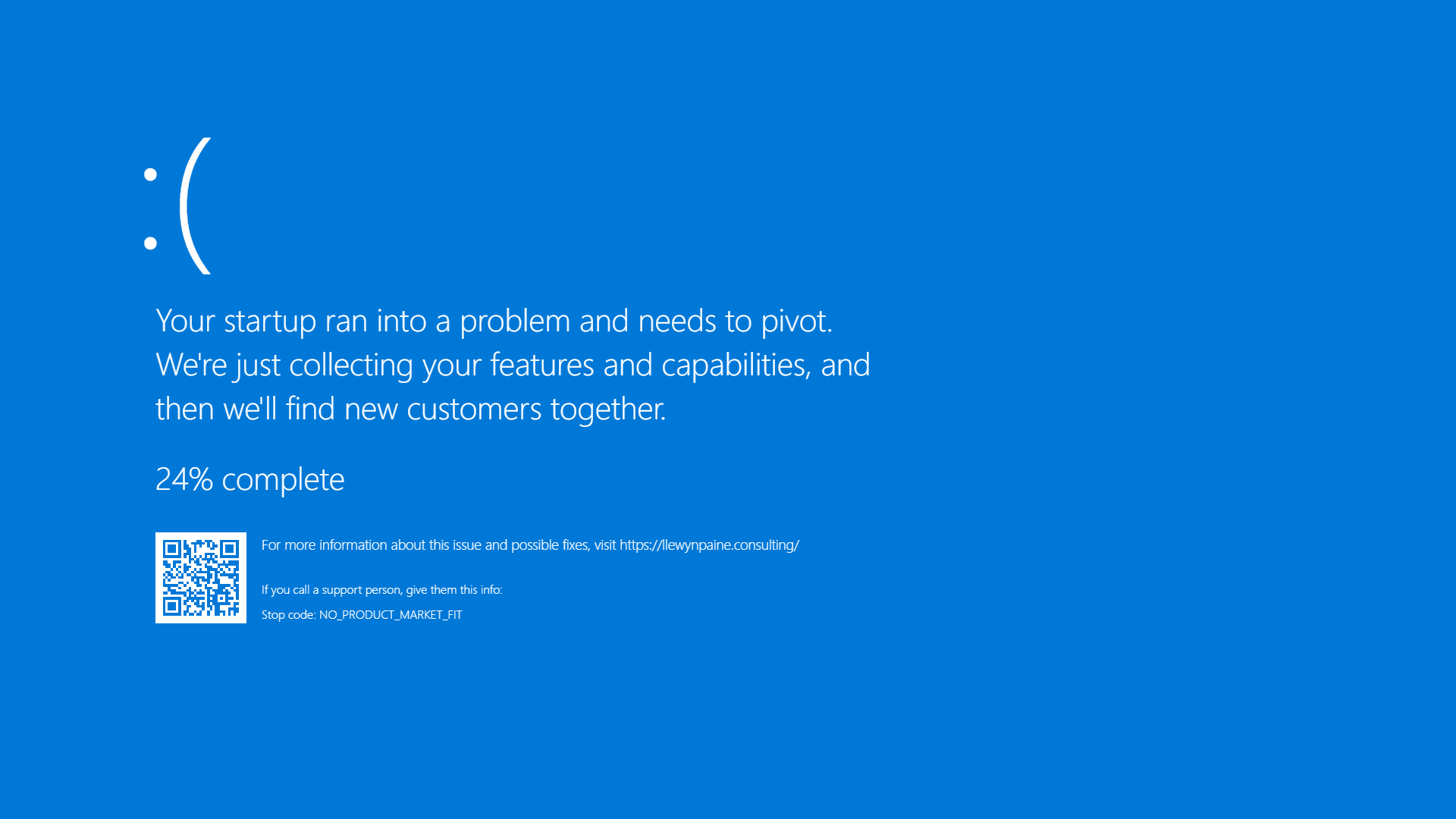Nobody wants to be their team’s AI “speedbump,” even if it’s better for the company and their users. Here’s what World Usability Day speakers recommended in this situation.
Read MoreSiloed work leads to blind spots in AI feature design–you need more diverse perspectives. A story from early in my career illustrates why this requires a new level of partnership between UX and engineering.
Read MoreThere’s a pressing need to measure AI adoption success not in terms of output, but outcomes. A lot has changed since I gave this talk on “Coexisting with AI” at Rosenfeld Media’s Advancing Research in March, but this core principle hasn’t.
Read MoreLast week, I presented to the UX research community at the Library of Congress. I shared five ways that UX roles are evolving with AI, from process changes to entirely new capabilities.
Read MoreAt Austin Tech Week 2024, companies from startups to Meta shared their design process for AI. These were the four principles they all agreed on.
Read More“For truly transformational innovation, markets are hard to size. And often the bigger question is whether people will actually use this.” This quote from Austin Tech Week rings very true with my experience in the world of emerging tech product innovation. Here’s what I do instead of calculating TAM.
Read MoreIn 2020, I shared remote product discovery techniques for businesses trying to pivot during the pandemic. Before I could do that, I had to dismantle some common myths that prevent teams from conducting research in the first place.
Read MoreEmerging technology creates perplexing problems for user-centered design, such as: how do you take a user-centered approach when it’s too early to have a defined user? Does this mean you should throw out user-centered design, or choose your target user based solely on TAM?
Read MoreObserving how different generations interact with technology can be a surprisingly successful strategy for discovering new users to serve. In tech, we often have a blind spot when it comes to designing for users older or younger than ourselves. But broadening our perspective can reveal new opportunities for creating not just business value, but also meaningful changes in people’s lives.
Read MoreA lot of my work focuses on helping emerging technology teams find product/market fit. But this can be important for teams innovating with established technologies as well. There are three common situations where the need to find a new market arises: slumping sales, realizing your existing market is too small, and designing for emerging technologies.
Read MoreEmerging tech teams may build a product thinking there’s a market, only to be forced to pivot when sales slump. A human-centered technical exploration can be a starting point for discovering new markets. I helped a consumer robotics team create user-centered “razors” to identify new target customers, despite tight timelines and lack of access to prototypes or production models.
Read MoreLow-cost, “lean” prototypes are the most efficient way to test user satisfaction with innovative experiences. But many product teams either overengineer their prototypes or omit testing with users entirely until it’s too late. In this post, I share 5 thought starters for teams looking to think outside the box about simulating experiences for user testing.
Read MoreThe DVF (Desirability-Viability-Feasibility) Framework, and frameworks like it, are tools to focus innovation in ways that are more likely to produce market success. However, most teams using these frameworks impede their effectiveness by failing to collect customer input across all three of the DVF tracks. In this post, I share three things leaders can do to equip their teams for more impactful innovation.
Read MoreI started Llewyn Paine Consulting, LLC because traditional market and user research techniques fall short when it comes to creating new markets for emerging technology. I created a repeatable, systematic approach to technology-customer matchmaking that can be effectively applied by ordinary entrepreneurs, product managers, designers, and researchers in the real world.
Read MoreIf you’re a product leader tasked with figuring out what mixed reality means for your products or services, you should expect to evolve your processes and tools. To give you a head start on the changes you’ll need to make, here are four questions you can start thinking about today.
Read More














